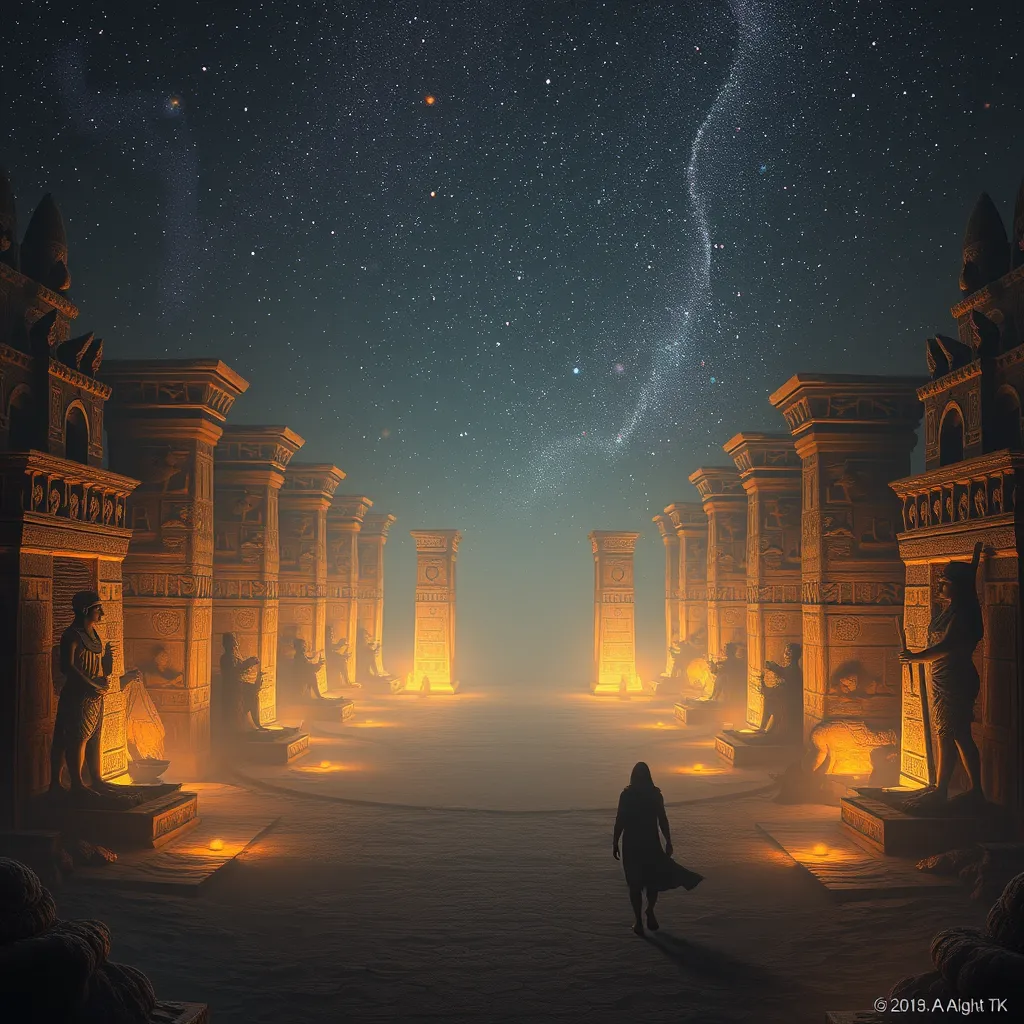The Duat: A Realm of Spiritual Journeys
I. Introduction to the Duat
The Duat, often referred to as the Egyptian underworld, holds a significant place in ancient Egyptian mythology. It is not merely a realm of the dead; rather, it embodies a complex spiritual landscape where the souls of the deceased navigate their afterlife. The Duat represents the journey of the soul, reflecting the ancient Egyptians’ profound beliefs in life after death and the importance of spiritual existence beyond the physical realm.
In ancient Egyptian culture, the Duat was integral to the beliefs and practices surrounding death and the afterlife. It served as the setting for the soul’s journey, where it faced various challenges and judgments before reaching a final resting place. Understanding the Duat provides insight into the spiritual practices of the ancient Egyptians, their views on mortality, and the significance of resurrection and immortality.
II. The Structure of the Duat
The Duat is depicted as a vast and intricate realm, consisting of various landscapes and features that symbolize different aspects of the afterlife. It is often portrayed as a dark, labyrinthine place filled with rivers, mountains, and otherworldly creatures. Key features of the Duat include:
- Rivers: The Nile River flows through the Duat, symbolizing the connection between the living world and the afterlife.
- Mountains: These serve as barriers and thresholds, marking the transitions between different realms within the Duat.
- The Hall of Judgment: This is a central location where the heart of the deceased is weighed against the feather of Ma’at, representing truth and justice.
Each of these features plays a vital role in the journey of the soul, with the Hall of Judgment being the most significant, as it determines the fate of the deceased.
III. The Journey Through the Duat
The journey through the Duat is a critical aspect of ancient Egyptian belief systems. Upon death, the soul enters the Duat, embarking on a perilous journey that involves navigating through various challenges and trials. This journey symbolizes the soul’s transformation and purification. Key elements of this journey include:
- Encounters with Guardians: The soul must confront various deities and creatures that guard different paths within the Duat.
- Trials and Tests: The deceased is subjected to tests that reflect their deeds in life, determining their worthiness for the afterlife.
- Guidance from Deities: Divine figures, such as Anubis, play crucial roles in guiding the souls through the Duat.
This journey is often filled with peril, symbolizing the trials one must overcome in life, and serves as a reminder of the importance of moral integrity and virtue.
IV. Deities of the Duat
The Duat is populated by numerous gods and goddesses, each with specific roles in the afterlife. Some of the most significant deities include:
- Anubis: The god of mummification and the protector of graves, Anubis guides souls through the Duat and oversees the weighing of the heart.
- Osiris: The god of the afterlife and resurrection, Osiris rules the Duat and is often depicted as the final judge of the deceased’s fate.
- Ma’at: The goddess of truth and justice, Ma’at represents the principles of balance and morality, which are central to the judgment process.
These deities embody the ancient Egyptians’ understanding of the afterlife, serving as both protectors and judges for the souls navigating the Duat.
V. The Weighing of the Heart
A pivotal moment in the journey through the Duat is the weighing of the heart, a ceremonial act that determines the fate of the deceased. In this process:
- The heart of the deceased is weighed against the feather of Ma’at.
- If the heart is lighter than the feather, the soul is deemed pure and is allowed to enter the realm of the blessed.
- If the heart is heavier, it is consumed by Ammit, a fearsome creature, resulting in the soul’s destruction.
This judgment process highlights the significance of moral conduct in life and reinforces the belief in accountability for one’s actions.
VI. The Duat in Funerary Practices
The Duat featured prominently in ancient Egyptian funerary practices. Tomb paintings and texts often depicted scenes from the Duat, illustrating the journey of the deceased and the challenges they would face. Key aspects include:
- Tomb Art: Artworks within tombs served as guides for the deceased, providing illustrations of the Duat’s landscapes and the trials ahead.
- Funerary Texts: Texts such as the “Book of the Dead” offered spells and instructions for navigating the Duat.
- Offerings: Families would leave offerings for the deceased, ensuring they had the necessary provisions for their journey through the Duat.
These practices underscore the importance of preparing for the afterlife and the belief in the continued existence of the soul beyond death.
VII. The Duat in Modern Context
In contemporary society, the Duat continues to influence spiritual beliefs and practices. Its themes resonate in various ways:
- Spiritual Journeys: The concept of navigating through challenges and trials is reflected in many modern spiritual practices.
- Literature and Art: The Duat has inspired numerous works in literature and art, illustrating its enduring legacy.
- Popular Culture: Elements of the Duat appear in films, video games, and other media, showcasing its relevance in storytelling.
The Duat’s themes of transformation, judgment, and the quest for truth remain relevant, influencing how people perceive their spiritual journeys today.
VIII. Conclusion
In summary, the Duat is a foundational element of ancient Egyptian spirituality, offering insights into their beliefs about death, the afterlife, and moral accountability. Its complex structure, the journey of the soul, and the judgment process reflect a deeply ingrained understanding of existence beyond physical life. The enduring legacy of the Duat continues to inspire modern spiritual explorations and artistic expressions, affirming its significance in both ancient and contemporary contexts.
As we reflect on the Duat, we recognize its role not only as a mythological construct but as a symbol of the universal human quest for meaning, truth, and understanding in our spiritual journeys.




